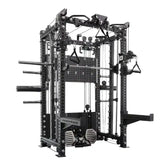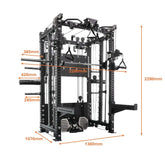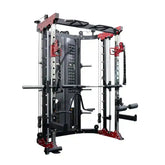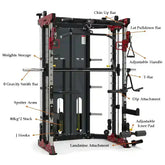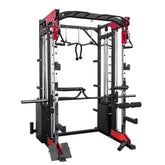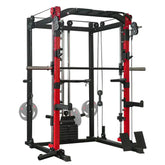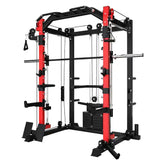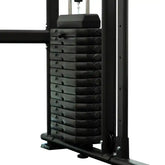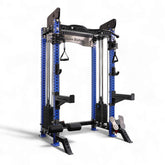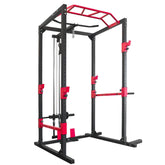How to Build a Defined Chest and Strong Shoulders Using Dumbbells
Dumbbells are among the most effective tools for developing upper-body strength and muscle definition. They offer a natural range of motion that promotes balance, coordination, and overall symmetry — making them ideal for both beginners and advanced lifters. Pair consistent training with balanced nutrition and recovery for lasting results.
Sculpt a stronger chest and broader shoulders with dumbbells — train smart, focus on form, and fuel your results with recovery and nutrition.
Why I Still Swear by Dumbbells After 10 Years of Coaching
When I started bodybuilding, I didn’t have access to expensive gym machines — just a bench, a few dumbbells, and pure determination. Those early workouts taught me something important: you don’t need a room full of machines to build a strong, aesthetic physique.
Even now, after more than a decade as a personal trainer and former bodybuilding competitor, I still rely on dumbbells for chest and shoulder training. They’re simple, effective, and force each side of your body to work independently — improving balance, control, and functional strength.
If you’re setting up a home gym, a high-quality dumbbell set is one of the smartest investments you can make. Explore the Dumbbell Collection at Alpha Go Fitness — premium, space-efficient equipment designed for home or commercial use, with Australia-wide delivery and discounted local delivery available.
The Science: Why Dumbbells Build More Muscle
Unlike fixed machines or barbells, dumbbells move freely through a natural range of motion. This freedom allows each side of your body to work independently, helping you correct imbalances and strengthen supporting muscles that often go underused.
When you press, fly, or raise dumbbells, your body must stabilise each arm independently — improving coordination, balance, and overall control.
This level of muscle engagement makes dumbbells one of the most effective tools for developing functional strength and shoulder stability, whether you’re a competitive bodybuilder or an everyday athlete training at home.
How to Build a Bigger, More Defined Chest with Dumbbells
Let’s start with your chest — one of the most popular muscle groups to train and one of the most misunderstood.

1. Flat Dumbbell Bench Press
Target: Pectoralis Major
-
Lie flat on a bench with dumbbells in each hand.
-
Lower them slowly to chest level, keeping elbows at 45 degrees.
-
Press up and squeeze your chest at the top.
This is your foundational mass builder. Unlike barbell presses, it allows your shoulders and wrists to move freely — reducing strain and increasing activation.
2. Incline Dumbbell Press
Target: Upper Chest, Front Deltoids
Set your bench to a 30–45° incline and grab a pair of dumbbells.
-
Lower the weights under control, keeping steady tension through your upper chest.
-
Press upward until your arms are extended — without locking your elbows — and squeeze at the top.
Coach’s Tip: Too many lifters chase heavy weights at the expense of form. Focus on controlled tempo and full range of motion — that’s where real growth happens.
3. Dumbbell Fly
Target: Chest (Pectoral Muscles)
Lie flat on a bench holding a dumbbell in each hand.
-
Keep a slight bend in your elbows as you open your arms wide.
-
Bring the dumbbells together above your chest in a smooth, controlled hugging motion.
-
Maintain steady tension and focus on a slow stretch before returning to the starting position.
Coach’s Tip: The dumbbell fly is a precision movement — it’s about control, not weight. Focus on the stretch, the squeeze, and even pacing to enhance muscle engagement and overall chest shape.
How to Build Strong, Rounded Shoulders
Broad, powerful shoulders create balance and symmetry across your upper body. Dumbbells are ideal for isolating each part of the deltoid muscle — front, side, and rear — helping you achieve a complete, well-rounded shoulder workout.
1. Dumbbell Shoulder Press
Target: Front and Side Deltoids
Sit upright on a bench with dumbbells positioned at shoulder height.
-
Press the weights upward in a controlled motion until just before lockout.
-
Lower them slowly to maintain tension and protect your shoulders.
Coach’s Tip: Focus on smooth tempo and posture — don’t rush the movement. Controlling both the lift and the descent builds strength, definition, and shoulder stability while keeping your joints healthy.
2. Dumbbell Lateral Raise
Target: Side Deltoids
Hold a dumbbell in each hand with a slight bend in your elbows.
-
Raise the weights out to your sides until they reach shoulder height.
-
Pause briefly at the top, then lower slowly under control.
-
Keep your torso steady — using momentum reduces muscle engagement.
Coach’s Tip: Precision is everything here. Focus on controlled movement and constant tension to develop rounded, balanced shoulders that enhance your overall symmetry.
3. Rear Delt Fly
Target: Rear Deltoids, Upper Back
-
Bend at the hips with a flat back.
-
Raise dumbbells out to your sides, leading with your elbows.
-
Squeeze shoulder blades together at the top.
A strong rear delt doesn’t just look good — it improves posture and balances your shoulder development.
Nutrition for Chest and Shoulder Growth
You can’t out-train a poor diet — I learned that during my early competition preps. Muscle is built in the gym, but sculpted in the kitchen.
Here’s the simple nutrition framework I share with clients to support muscle growth and recovery:
1. Protein is Priority- Aim for about 1.6–2.2 g of protein per kilogram of body weight daily to repair and build muscle. Good sources include chicken, turkey, fish, eggs, tofu, and whey protein.
2. Balanced Carbs for Energy- Carbohydrates fuel performance. Choose slow-digesting carbs such as oats, brown rice, and quinoa to maintain steady energy throughout your training.
3. Fats for Hormonal Health- Healthy fats support hormone balance and recovery. Add olive oil, nuts, and avocados to your meals for lasting energy and joint health.
4. Hydration and Recovery- Muscles are about 70 % water — dehydration affects strength and recovery. Drink consistently, and increase water intake during intense sessions.
Coach’s Insight: I’ve seen clients make faster progress by improving their post-workout nutrition — even without adding more training time. Smart fueling amplifies every rep you do with your Alpha Go Fitness dumbbells and benches.
The Perfect Dumbbell Split
You can build an incredible upper body with just dumbbells and a bit of structure.
Here’s a simple 3-day split I recommend for balanced development and recovery:
|
Day |
Focus |
Key Exercises |
|
Monday |
Chest |
Flat Dumbbell Press, Incline Press, Dumbbell Fly |
|
Wednesday |
Shoulders |
Dumbbell Press, Lateral Raise, Rear Delt Fly |
|
Friday |
Full Upper |
Combination of Chest and Shoulder Work, Push-Ups, Front Raises |
Add 10–15 minutes of core training after each session to enhance stability and posture — both essential for pressing and lifting movements.
Coach’s Tip: Consistency beats complexity. Three focused sessions a week with your Alpha Go Fitness dumbbells and bench can deliver serious upper-body results without needing a full commercial setup.
Complementary Equipment

Dumbbells are powerful training tools on their own — but even better when paired with key supporting equipment:
-
A bench for chest presses, fly variations, and seated movements.
-
A cable machine for constant-tension isolation work and strength variety.
-
A squat rack for compound lifts that build full-body power.
With these essentials, you can create a complete and efficient home gym setup that supports every training goal. Explore the Home Gym Collection at Alpha Go Fitness to discover durable, space-saving equipment designed for both home and professional training environments.
Final Thoughts from the Coach
Dumbbells will always be part of my training — and my clients’ programs — because they represent what fitness is really about: control, consistency, and progression.
You don’t need massive machines to sculpt a strong upper body. You need proper form, focused intensity, and the discipline to fuel your body right.
Build your foundation, train smart, and your chest and shoulders will take care of themselves. Start checking your equipment or contact us now.
Frequently Asked Questions
Can I build a full physique with dumbbells only?
Yes — with consistency and progressive overload, you can train every major muscle group effectively using just dumbbells and proper form.
How heavy should my dumbbells be for chest training?
Start with a weight that allows you to perform 10–12 controlled reps with good technique. Gradually increase resistance as your strength and stability improve.
How often should I train chest and shoulders?
Aim for 2–3 sessions per week, leaving at least 48 hours between workouts to give your muscles time to recover and grow.
What should I eat after training?
Refuel with a balanced meal that includes lean protein (like chicken, eggs, or tofu) and complex carbohydrates (such as rice or oats) within 45 minutes of finishing your workout.

